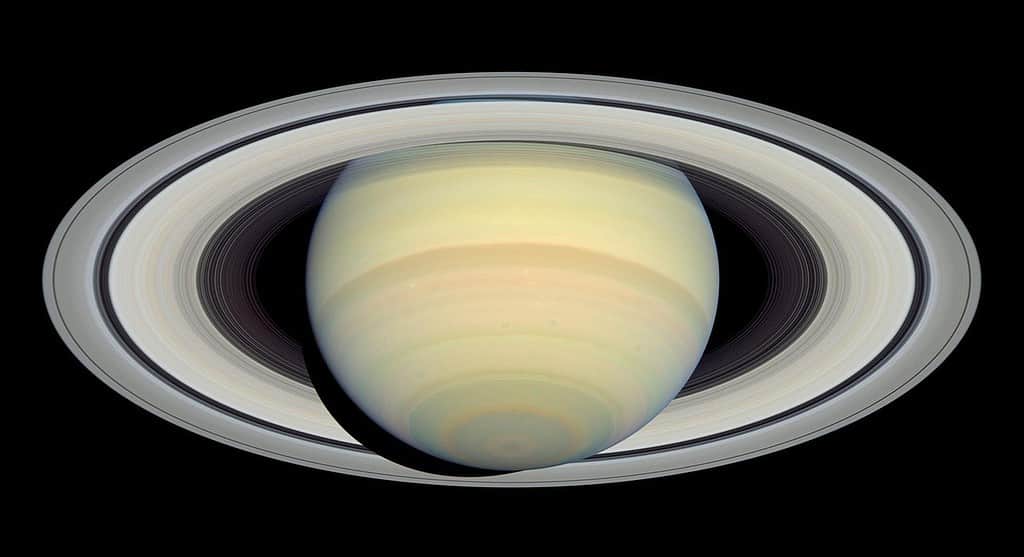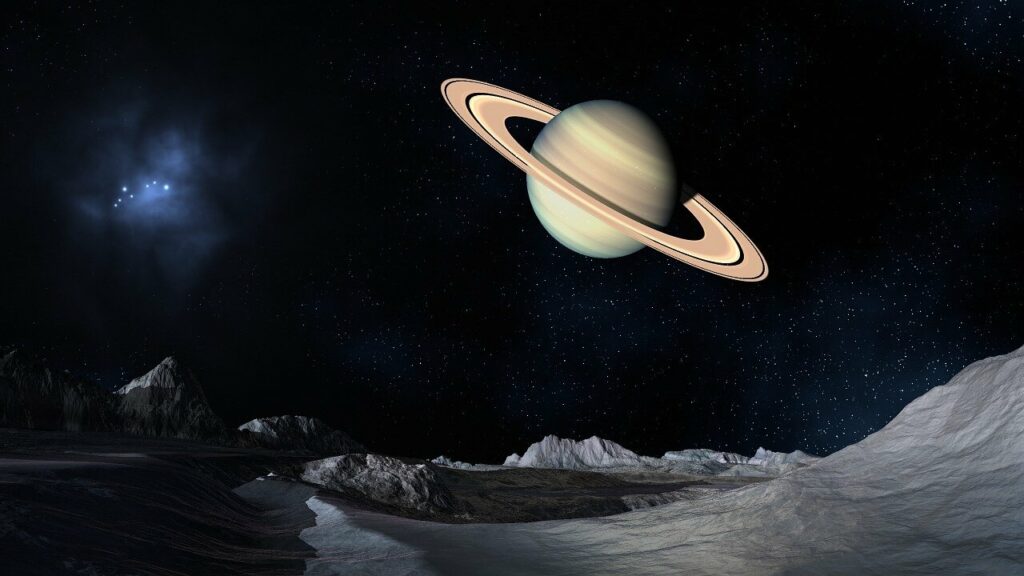Some 450 million years ago, the world was a very different place. Invertebrates, namely mollusks and arthropods, dominated the oceans. The first land plants were just emerging. Trees didn’t exist. Dinosaurs were 230 million years away. In the seas, a group of jawed fish were just emerging. These fish, which we now call sharks, would stay at the top of the food chain to the current day, dominating ecosystems and withstanding some of our planet’s most devastating extinctions.
Sharks probably didn’t have telescopes and presumably, they didn’t care much about the night sky. But if they did, and had looked at Saturn, it would have looked very different than it does today. Specifically, it wouldn’t have had its distinctive rings.

If you thought this was about sharks and life on Earth — sorry about that. It’s about Saturn and its rings. The iconic rings weren’t always there. The rings are basically billions of particles of ice, remnants of comets, asteroids, or other things that broke up before they reached Saturn and were kept in place by the planet’s powerful gravity.
But these pieces of ice are also “polluted” by other types of material. While this only makes up less than 2% of the rings’ volume, it can offer clues as to how the rings formed.
During its last mission, the Cassini spacecraft performed 22 orbits between Saturn and its rings. During that time, it analyzed the rings in detail and measured how they change over time, with the influx of new material. The impact of meteoroids not only pollutes the rings, it ultimately leads to ring material drifting inward toward the planet.
Indiana University Professor Emeritus of Astronomy Richard Durisen and Paul Estrada, a research scientist at NASA’s Ames Research Center in California’s Silicon Valley, extrapolated these observations
“Our inescapable conclusion is that Saturn’s rings must be relatively young by astronomical standards, just a few hundred million years old,” Durisen said. “If you look at Saturn’s satellite system, there are other hints that something dramatic happened there in the last few hundred million years.”
A debate for the ages

The debate around Saturn’s rings has been going on for decades. Some researchers claimed they are older, some that they are younger. Durisen and Estrada are on the ‘younger’ side of the argument. Their reasoning is that the influx of meteoroids would erode and affect the rings, causing them to ultimately lose cohesion and collapse.
Their new calculation, based on the data from Cassini, backs this up.
“We have shown that massive rings like Saturn’s do not last long,” Estrada said. “One can speculate that the relatively puny rings around the other ice and gas giants in our solar system are left-over remnants of rings that were once massive like Saturn’s. Maybe some time in the not-so-distant future, astronomically speaking, after Saturn’s rings are ground down, they will look more like the sparse rings of Uranus.”
There are still uncertainties in the calculation, especially regarding the origin of the initial material. These uncertainties make it impossible to know the exact age of the rings, but the researchers conclude that they’re probably in the range of 100 to 400 million years, and are bound to be short-lived on the cosmic scale.
Durisen says future missions may shed more light on the origin of these rings — and if we learn more about them, we may also discover what happened in Saturn’s system a few hundred million years ago. This could be particularly interesting since some of Saturn’s moons, like Europa or Enceladus, may hold liquid water under their frozen surface.
“If we can discover what happened in that system a few hundred million years ago to form the rings, we may just end up discovering why Saturn’s moon Enceladus is spewing out from its deep ocean plumes of water, ice and even organic material,” Durisen concludes. “We may perhaps even end up finding the building blocks of life itself on Enceladus.”
Journal Reference: Richard H. Durisen et al, Large mass inflow rates in Saturn’s rings due to ballistic transport and mass loading, Icarus (2023). DOI: 10.1016/j.icarus.2022.115221
Was this helpful?



